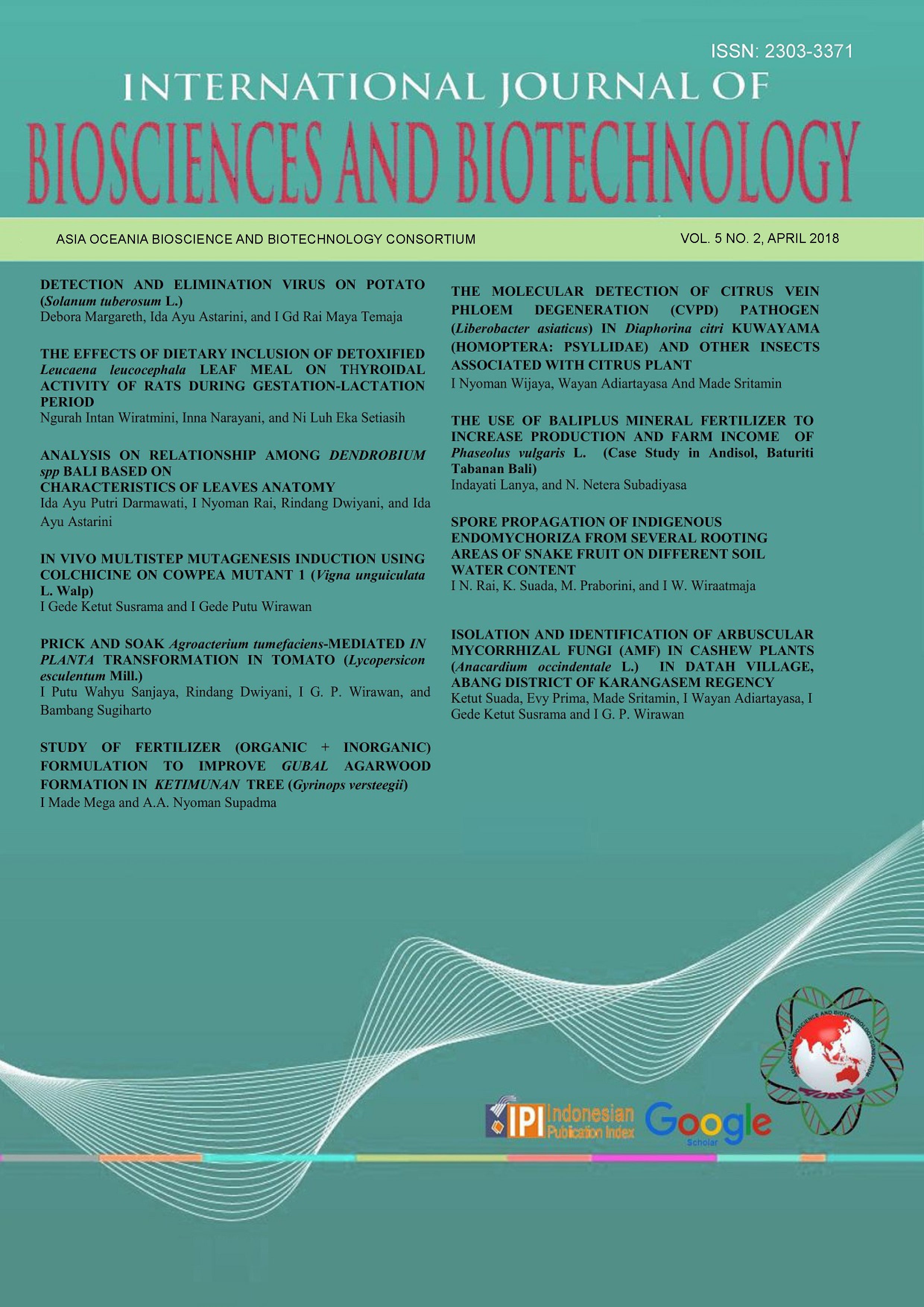ANALYSIS ON RELATIONSHIP AMONG DENDROBIUM spp BALI BASED ON CHARACTERISTICS OF LEAVES ANATOMY
Abstract
From explorations in several parts of the forest of Bali, 24 species of Dendrobium orchids were identified. Relationship among these species needed to be mapped for further development of orchids. Characteristics of leaves anatomy have been used to determine relations among plants. Characteristics of anatomy that were observed in this study from the paradermal and transversal cut of the leaves were shape and number of epidermis cells, location of stomata, the direction of stomata opening, shape and number of stomata, length of the epidermis and stomata, density of stomata, index of stomata, and thickness of mesophyll. Analysis of relations among species was displayed as a dendogram, using the software Minitab 17 Vis. Analysis of relationship among 24 species of Dendrobium Bali based on the leaves anatomy used grouped average method in squared Euclidean distance with the scale of 0.349 to 0.972. At Euclidean distance of 0.349, two clusters were formed where D. aloifolium and D. subulatum were separated from the other clusters. At 80 % similarity coefficient, seven clusters were formed using similar method, with the 3rd and 5th clusters had the shortest distance (169.35). If species that were clustered together were cross-bred, the success rate was higher; meanwhile, the further away the relation between species, the smaller the success rate of cross breeding. The possibility of getting high-quality genotypes was higher when the cross-breeding was successful.






